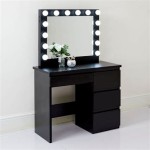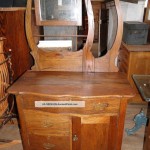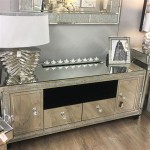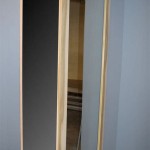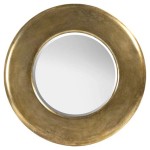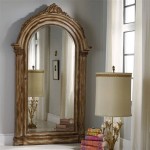How To Replace a Mirror Medicine Cabinet
Replacing a medicine cabinet involves several steps, from careful planning and preparation to the actual installation and finishing touches. This article provides a comprehensive guide to help ensure a successful replacement project.
Planning and Preparation
Before beginning the replacement process, several preliminary steps are essential to ensure a smooth and efficient installation. These steps include:
- Choosing the Right Cabinet: Select a cabinet that fits the existing opening or be prepared to modify the wall opening to accommodate the new cabinet. Consider factors such as size, style, features (e.g., adjustable shelves, integrated lighting), and material.
- Gathering Necessary Tools and Materials: Assemble all required tools and materials beforehand to avoid interruptions during the installation process. Common tools include a stud finder, level, tape measure, screwdriver, drill, safety glasses, and gloves. Necessary materials typically include the new medicine cabinet, mounting hardware (screws, anchors), and caulk or sealant.
- Turning Off the Power: If the existing medicine cabinet has integrated lighting or electrical outlets, switch off the power at the circuit breaker to prevent electrical shock. Verify the power is off by testing the lights or outlets before proceeding.
Removing the Old Medicine Cabinet
Careful removal of the existing medicine cabinet is crucial to minimize damage to the surrounding wall. The following steps outline the removal process:
- Protecting the Sink and Countertop: Cover the sink and countertop with a drop cloth or cardboard to prevent scratches or damage from falling debris.
- Removing the Cabinet Door(s): Most medicine cabinet doors can be easily removed by lifting them off the hinges or by unscrewing hinge pins. This provides better access to the cabinet's interior and mounting hardware.
- Locating and Removing Mounting Screws: Identify the screws securing the cabinet to the wall. These screws may be hidden behind shelves, decorative trim, or inside the cabinet. Carefully remove the screws, supporting the cabinet to prevent it from falling.
- Detaching the Cabinet from the Wall: Once the screws are removed, gently pull the cabinet away from the wall. If the cabinet is glued or caulked in place, carefully cut through the sealant with a utility knife.
- Inspecting the Wall Opening: After removing the cabinet, examine the wall opening for any damage or irregularities. Repair any damaged drywall or framing before installing the new cabinet.
Installing the New Medicine Cabinet
With the old cabinet removed and the wall opening prepared, the new cabinet can be installed. The following steps guide the installation process:
- Testing the Fit: Carefully insert the new cabinet into the wall opening to ensure a proper fit. If the cabinet doesn't fit, adjust the opening as needed.
- Marking Mounting Locations: Use a pencil to mark the locations for the mounting screws on the wall through the mounting holes in the cabinet.
- Drilling Pilot Holes: Drill pilot holes at the marked locations. The size of the pilot holes should be slightly smaller than the diameter of the mounting screws.
- Installing Mounting Hardware: If necessary, install wall anchors into the pilot holes. This is particularly important in areas where the cabinet isn't mounted directly to a wall stud.
- Securing the Cabinet: Carefully insert the cabinet into the opening and align it with the pilot holes. Secure the cabinet to the wall using the appropriate mounting screws.
Finishing Touches
Completing the installation involves a few final steps to ensure a polished and functional medicine cabinet:
- Sealing Gaps: Apply a bead of caulk or sealant around the perimeter of the cabinet to seal any gaps between the cabinet and the wall. This helps prevent moisture from entering the wall cavity.
- Reinstalling the Door(s): Reattach the cabinet door(s) by carefully aligning them with the hinges and securing them in place.
- Restoring Power: If the new cabinet has electrical components, restore power at the circuit breaker and test the lights or outlets.
- Cleaning Up: Remove any debris and clean the area around the newly installed cabinet.
Addressing Common Issues
Several common issues can arise during a medicine cabinet replacement. Being aware of these potential problems and their solutions can help simplify the process.
- Cabinet Doesn't Fit: If the new cabinet is too large for the existing opening, the opening may need to be enlarged. If the cabinet is too small, filler strips can be used to fill the gaps.
- Difficulty Removing Old Cabinet: If the old cabinet is glued or caulked in place, a utility knife can be used to carefully cut through the sealant. If the cabinet is still difficult to remove, additional assistance may be required.
- Stripped Screw Holes: If the screw holes in the wall are stripped, larger screws or wall anchors can be used to secure the new cabinet.

Diy Niche Shelf Old Bathroom Medicine Cabinet Makeover A Piece Of Rainbow

Bathroom Medicine Cabinet Mirror Replacement Doityourself Com Community Forums

How To Install A Mirrored Medicine Cabinet Vanity Light

How To Install A Medicine Cabinet The Home Depot

Ideas To Update A 60 S Mirror Medicine Cabinet Hometalk

Frame Update To Medicine Cabinet Atop Serenity Hill Bathroom Mirrors Diy Mirror

Diy Niche Shelf Old Bathroom Medicine Cabinet Makeover A Piece Of Rainbow

How To Replace A Medicine Cabinet Mirror Doityourself Com
Is My Approach To Removing These Medicine Cabinets Right Pic Diy Home Improvement Forum

Easily Replace An Old Medicine Cabinet Wg Wood S

